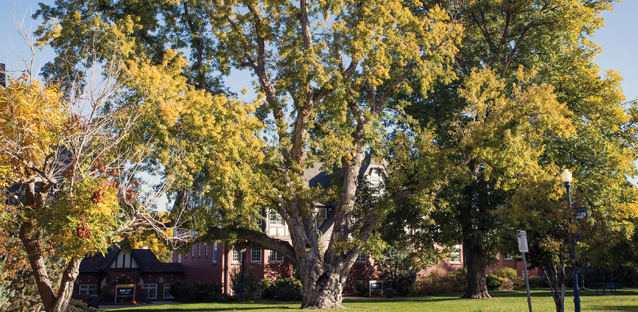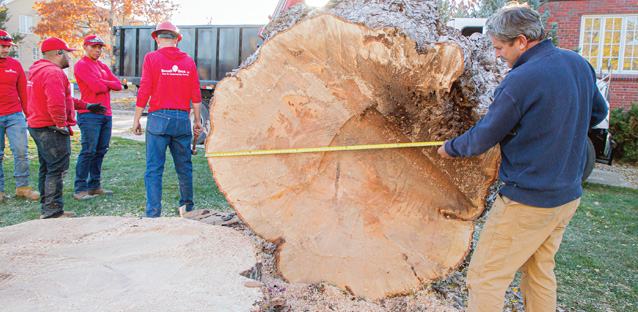Saying Goodbye to UNC’s Century-Old Silver Maple Tree
It was around 1900 when workers at then-State Normal School of Colorado planted a silver maple sapling on campus. The fledgling college was just 11 years old at the time. But over the next 122 years, the tree and the campus grew together and flourished — welcoming new students each fall with gold leaves reaching into blue skies.
Over the seasons, the tree stood sentinel through 17 university presidents, the influenza epidemic of 1918, wars and the Great Depression. It provided shade for activists marching for civil rights, equality and social justice. It endured ice storms, high winds and blizzards and stood with comforting normalcy when the campus was quieted by COVID-19. Then, when students, faculty and staff returned in 2021, it was there lighting up its green corner near President’s Row with gold leaves against a blue sky — a Bear welcome if ever there was one. Tales were told about the tree that pointed to darker times, but no evidence indicates it was ever used for anything but climbing, a shady study spot and a background for countless photos.
But the tree — which held state champion status until several years ago — has been in decline, its massive canopy shrinking due to reduction from dead wood. In fall 2022, an open cavity on the tree’s trunk, large enough to be spotted from a block away, drew Shiloh Hatcher, forester with the City o f Greeley, to take a closer look during a citywide tree assessment. Part of his job is determining when issues are fatal for a tree and when they can be remedied.
During an assessment of the tree, Hatcher and two members from his forestry team struck several areas around the trunk with a hammer, the hollow echoes confirming troubles in the base of the tree. They had additional concerns with the branches above, including a large dead limb that arched over common foot-traffic areas, more open cavities and areas called woundwood — a change in normal branch growth in response to a wound.
“What we try to do is look at the tree and figure out if we can reduce weight or take other measures to mitigate risk. Removal is always the last option,” Hatcher said before the decision was made to remove the tree.
“But all of these issues together have created a problem I don’t think we can prune our way around. We have to consider that this is a campus with people walking under these trees. If this tree fails, one of the consequences is that it’s likely to hurt someone. Considering the age of the tree and the combined areas of concern, we’re doing the right thing by removing it.”
On November 8, amidst a gathering of students and faculty, the beloved tree was removed. The silver maple was the oldest and largest tree on campus, its trunk measuring over 80 inches in diameter with a canopy that at one time reached nearly 70 feet high and spanned 85 feet across.
The silver lining is the wood from the tree has been saved, with discussion underway for best uses to honor the silver maple. The tree will continue to give back to students through hands-on learning: One large round was taken for classroom use where students will study the tree’s rings. Students are giving back as well, raising funds to plant one tree for each of the silver maple’s 122 years, continuing the tree’s legacy for generations of Bears.

Photo by Woody Myers


